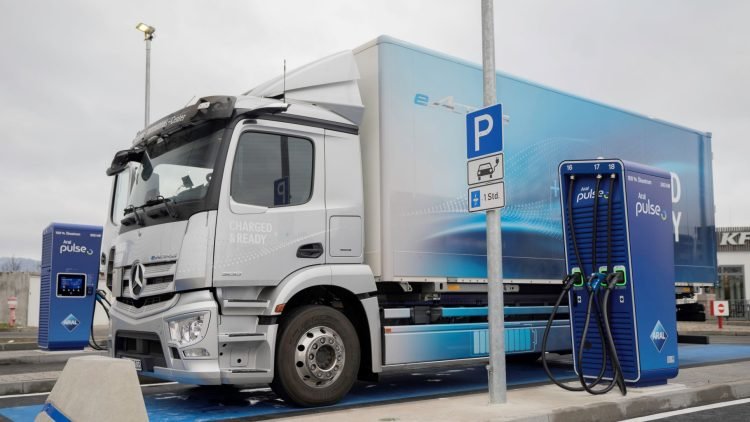.
EV charging is one of bp’s core businesses in the journey to becoming an integrated energy company. The head of bp pulse, Richard Bartlett, explains why we’re focusing on scale, speed and real estate to meet the needs of current and future customers
Around a quarter of greenhouse gas emissions come from the transport sector globally. Electric vehicles don’t produce any tailpipe emissions. That gives you some idea of the opportunity here. We’re providing the infrastructure needed for charging across multiple vehicle classes – passenger cars, fleets, and trucks. The amount of energy we’ll ‘charge’ into vehicles is expected to increase more than a hundred times from 2021 to 2030. This is a big ambition.
bp is transforming into an integrated energy company. Key to this transformation are five transition growth engines: bioenergy, convenience, hydrogen, renewables & power, and EV charging.
“The amount of energy we’ll ‘charge’ into vehicles is expected to increase more than 100 times from 2021 to 2030. This is a big ambition.”

As a fuel retailer, what are your priorities for EV charging
We’re building a network of high-speed chargers because we believe customers want and need fast charging as they make the switch to electric vehicles. This requires high-power grid connections, planning permissions and land in the right places. It’s a complex process and we’re working to break down the barriers to progress to get the chargers in the ground as quickly as possible.
Just as importantly, we’re building and rolling out fleet depot charging. Together with our physical infrastructure, we have digital energy management solutions that can optimize the charging cycle of fleet vehicles and help fleets to manage the financial commitment of the EV switch, including with innovative approaches to project funding.
Above all, safety is our priority – from the installation of the charge points, to how they operate. Nothing is more important than that.

What makes your approach different? What else is needed for success?
It’s very simple: it’s all about collaboration. We’re working with organizations like Uber, Hertz, Iberdrola, Marks & Spencer and REWE. This is crucial so we can secure the real estate we need, accelerate the infrastructure roll-out and bring drivers to our sites to charge.
Governments and regulators have a crucial role, too. The private sector is stepping up and committing significant investments. Equally, charge point operators like bp pulse need the right environment in our markets so that we can scale high-quality infrastructure that works for consumers and fleets. Find out more about our partnership with M&S in the UK
What is bp doing to help customers make the switch to EV?
We’re focusing on two quite distinct market segments: charging ‘on the go’ and fleets. For fleets, we’re acting as a decarbonization partner, optimizing the transition to EVs through hardware to digital products and services. Fleet operators need the right charge in the right place, at optimum cost.
What our customers ‘on the go’ care about is speed and convenience. Ninety percent of the charge points we’re putting in today are rapid or ultra-fast. That’s the difference between adding hundreds of miles of range in minutes and having to leave your car overnight on a slow charger.
In addition, we’re investing in E-Truck charging – we opened Europe’s first E-Truck charging corridor in Germany. So, we’re working on the decarbonization of the movement of goods, as well as the decarbonization of the movement of people.

Why it matters
We believe that for road transport to decarbonize at the pace and scale that is needed to achieve the goals of the Paris Climate Agreement, it is necessary for the roll-out of EV charging infrastructure and usage of electric vehicles to be scaled up in parallel with – or even ahead of – the needed decarbonization of electricity grids.
By bringing our capabilities and reach in convenience together with EV charging, we can provide customer-focused, lower carbon transport solutions over time. We see significant value through our focus on fleets and fast* charging to on-the-go customers, who are increasingly demanding decarbonization solutions.
For the full article visit Top of the range: how the right infrastructure can boost driver confidence to go electric | News and insights | Home (bp.com)